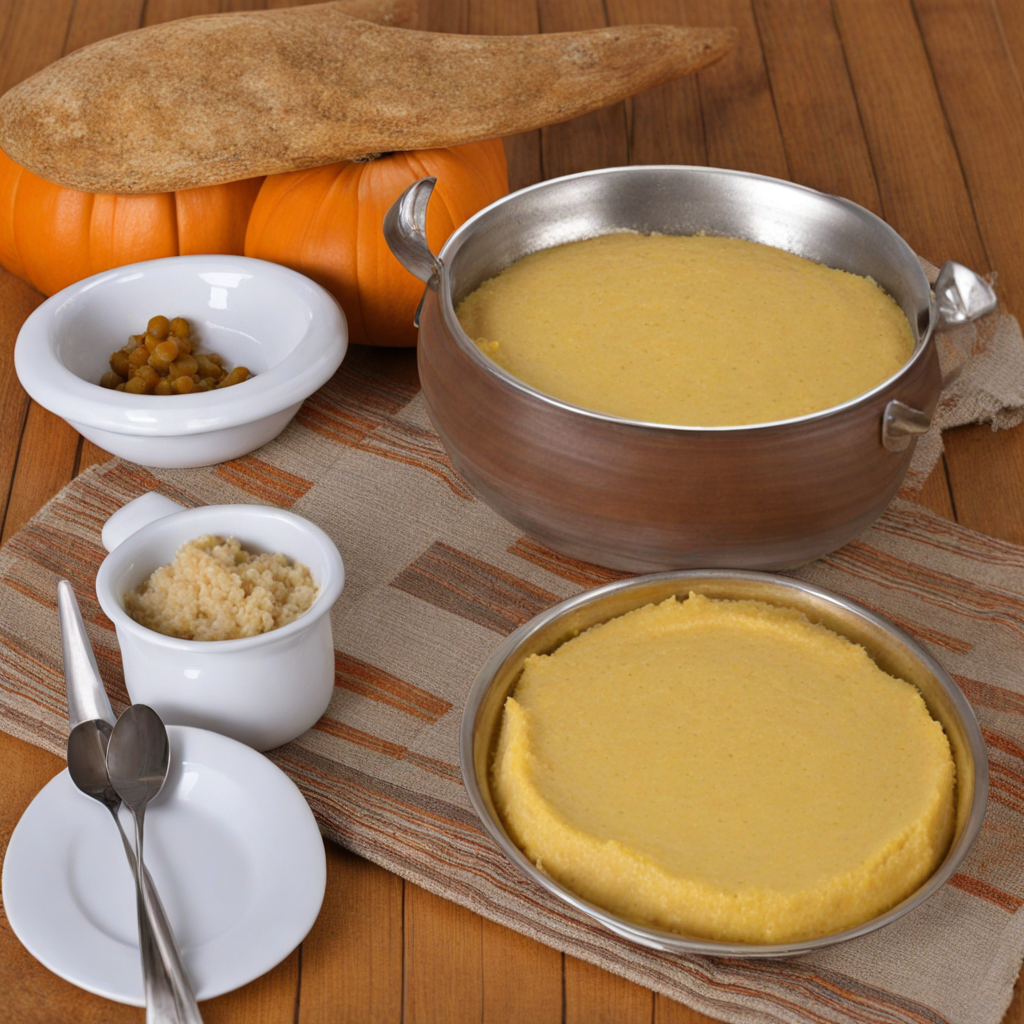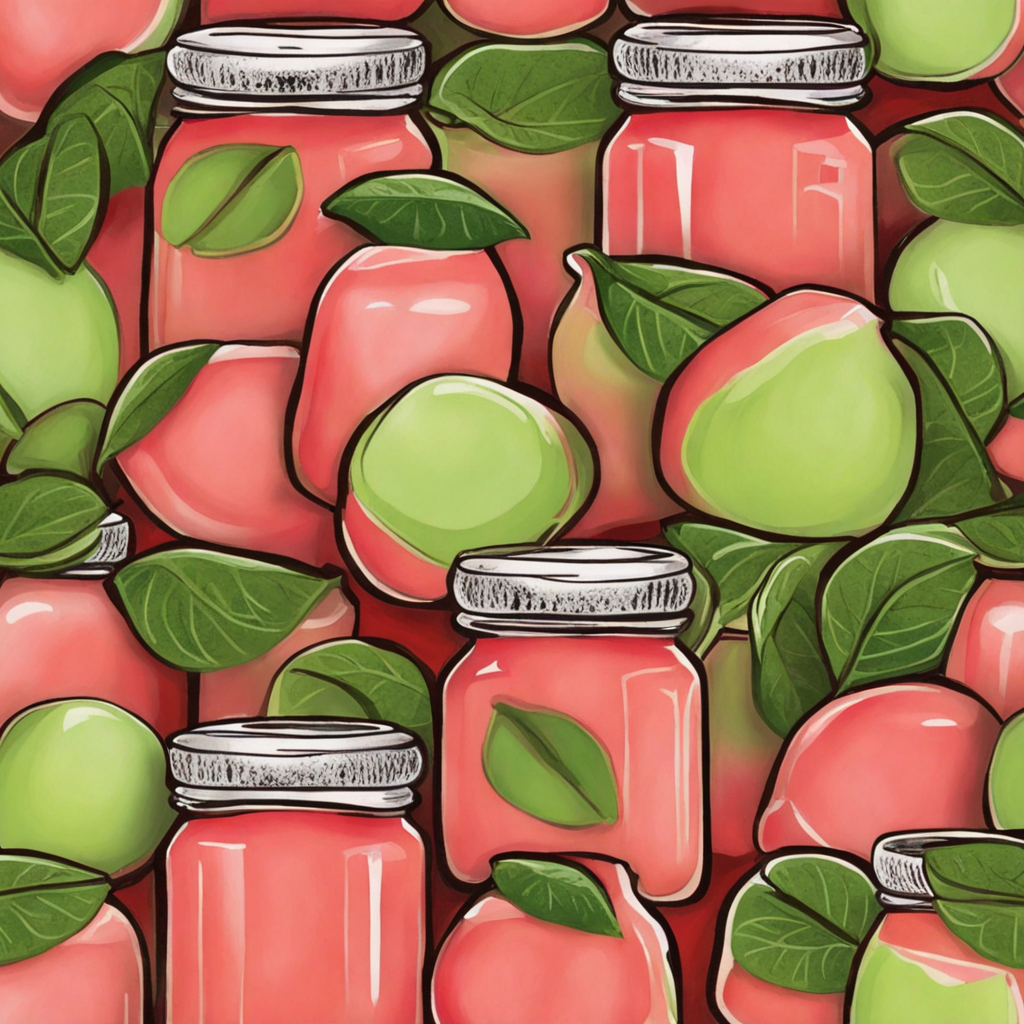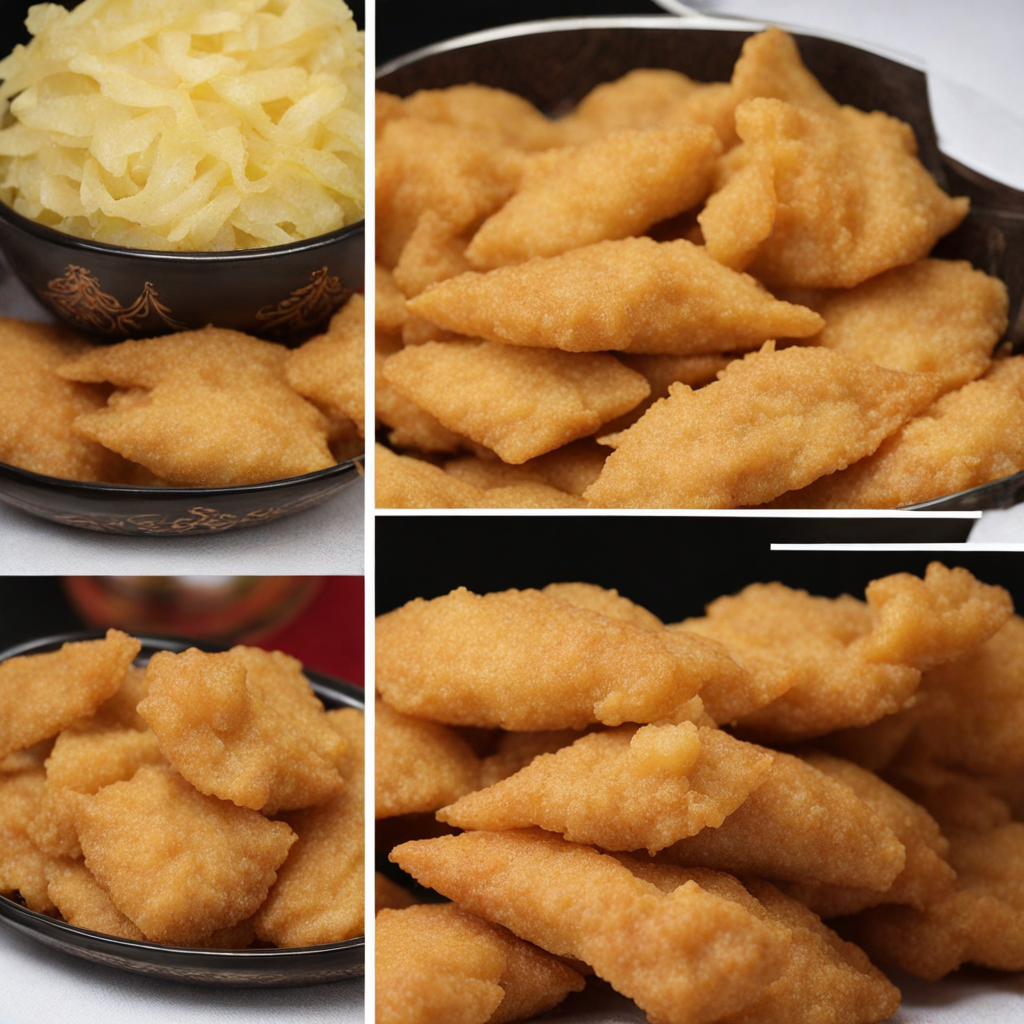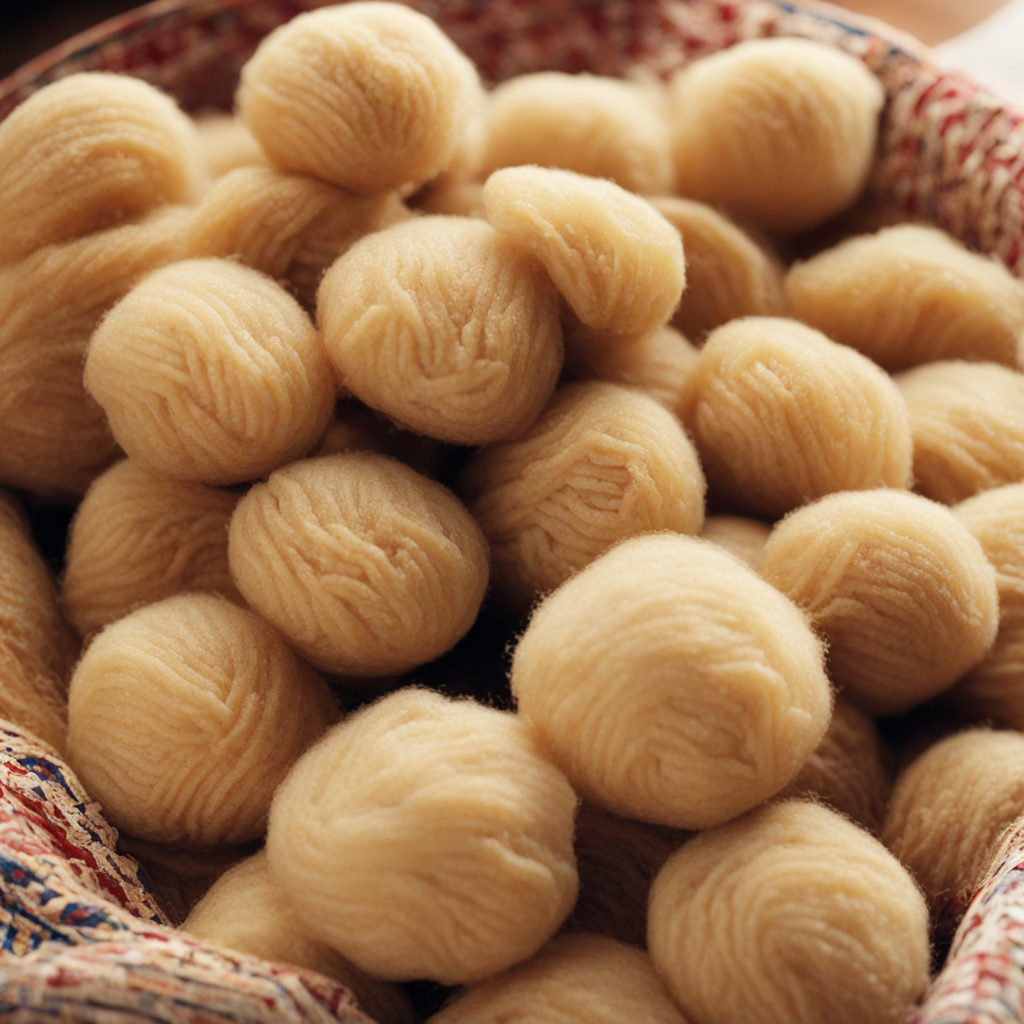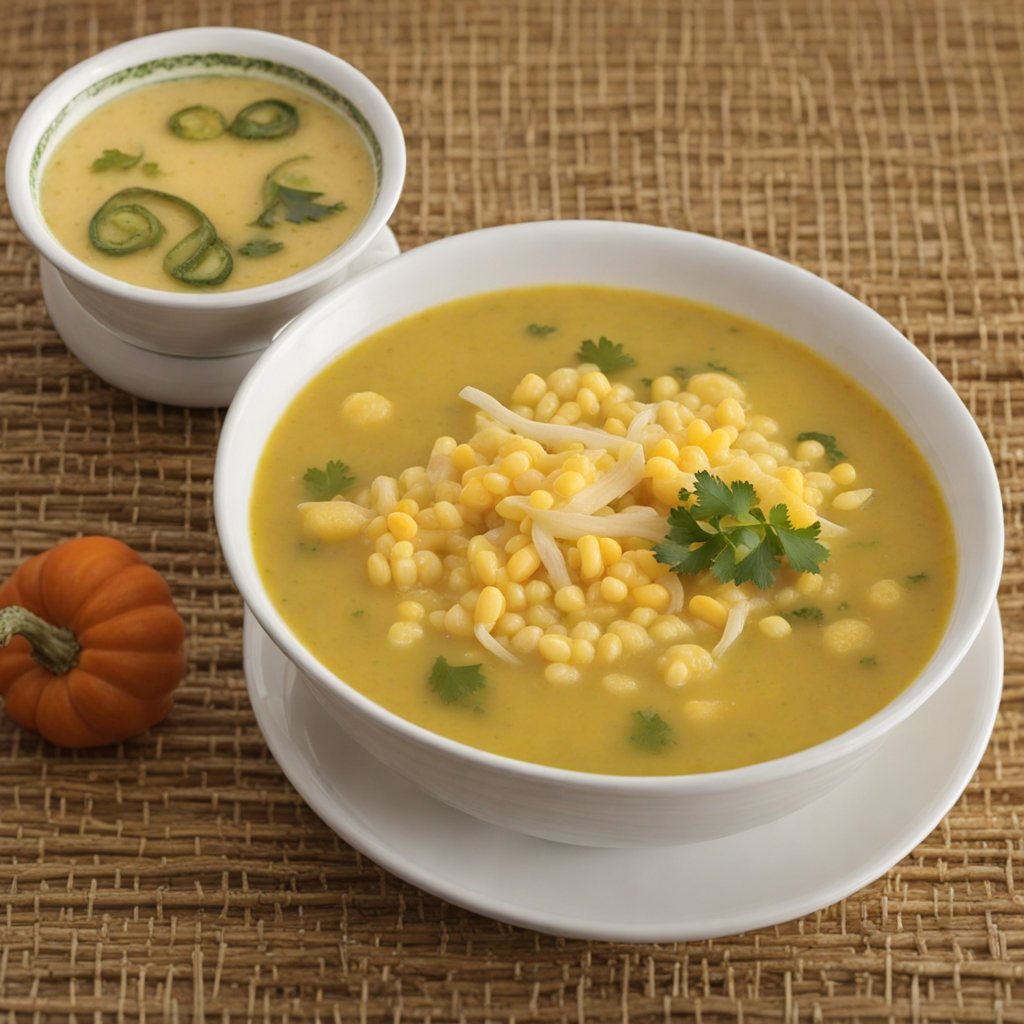Kivevé
Kivevé is a delightful and hearty dish that showcases the unique flavors of Paraguayan cuisine. This traditional recipe consists primarily of corn, which plays a central role in many South American dishes. The name 'Kivevé' translates to 'thick corn porridge,' reflecting its rich and creamy texture. The preparation begins with fresh corn, which is ground into a fine paste and then mixed with milk or water, creating a smooth batter. This base is often complemented by ingredients such as cheese, onions, and sometimes meat, which add depth and enhance the overall flavor profile of the dish. What sets Kivevé apart is its unique combination of savory and slightly sweet flavors. The natural sweetness of the corn pairs beautifully with the saltiness of the cheese and the earthiness of the onions. As the dish cooks, it develops a golden crust on the outside while remaining soft and moist on the inside, resulting in an irresistible contrast in texture. Kivevé can be enjoyed as a main dish or a side, making it versatile and perfect for any meal. This comforting dish is often served warm and can be accompanied by a variety of toppings or sides, such as fresh herbs, avocado, or a spicy sauce for those who enjoy a bit of heat. Kivevé is not just a meal; it's a celebration of Paraguayan traditions and agricultural bounty, particularly the local corn harvest. For those eager to explore new culinary experiences, Kivevé offers a delicious glimpse into the heart of Paraguay's food culture, promising to leave a lasting impression on your palate.
How It Became This Dish
Kivevé, a traditional dish from Paraguay, is not just a meal; it is a vibrant reflection of the country’s rich cultural tapestry, its history, and its people. This hearty dish, made primarily from cornmeal and a variety of other ingredients, has its roots deeply embedded in the indigenous cultures of the region, and it showcases the blend of influences that characterize Paraguayan cuisine. Origins The origins of Kivevé can be traced back to the indigenous Guarani people, who inhabited the region long before the arrival of Europeans in the 16th century. Corn, or maize, was a staple of their diet, revered not only for its nutritional value but also for its cultural significance. The Guarani cultivated various types of corn, which they used to prepare a range of dishes, including porridge-like meals and cakes. The term "Kivevé" itself derives from the Guarani language, reflecting its indigenous roots. The dish typically consists of cornmeal mixed with a variety of ingredients such as cheese, meat (often chicken or pork), and sometimes vegetables. The ingredients are combined into a thick batter, which is then baked or steamed until it sets into a dense, comforting dish. Cultural Significance Kivevé is more than just food; it is a symbol of Paraguayan identity and cultural heritage. It embodies the fusion of indigenous and European influences that characterizes much of the region's cuisine. After the arrival of Spanish colonizers, many local dishes were adapted to include new ingredients and cooking techniques, leading to a culinary evolution that shaped contemporary Paraguayan food. In Paraguayan culture, Kivevé is often associated with communal gatherings, family celebrations, and traditional festivals. It is a dish that brings people together, reflecting the communal aspect of cooking and eating in Paraguayan society. During festivities, families often prepare large quantities of Kivevé to share with friends and relatives, reinforcing social bonds and cultural traditions. Moreover, Kivevé holds a special place in the culinary practices of the rural population, where it serves as a nourishing meal that can be easily prepared with locally sourced ingredients. The dish is particularly popular in the countryside, where it is often cooked over an open fire or in traditional clay ovens, lending it a unique flavor that is difficult to replicate in modern kitchens. Development Over Time As Paraguay evolved politically and economically, so too did its culinary landscape. The 19th and 20th centuries saw significant changes, influenced by migration patterns, globalization, and the introduction of new agricultural practices. While the core ingredients of Kivevé have remained largely unchanged, the ways in which it is prepared and served have diversified. In urban areas, for example, Kivevé has been adapted to modern tastes and culinary practices. Chefs and home cooks alike have begun to experiment with the dish, incorporating various types of cheese and meats, as well as different cooking methods. The rise of gourmet cuisine has led to innovative presentations of Kivevé, with some chefs elevating it to fine dining status, serving it alongside sophisticated sauces or garnishes. Despite these changes, Kivevé retains its traditional roots. In many households, the preparation of Kivevé is still a family affair, with recipes passed down through generations. Each family may have its own version, reflecting personal tastes and regional variations. This adaptability is part of what makes Kivevé a living tradition, constantly evolving while still honoring its historical origins. Kivevé in Contemporary Paraguay Today, Kivevé is enjoyed across Paraguay, from the bustling streets of Asunción to the quiet rural villages. It is commonly found in restaurants, street food stalls, and homes alike, often served with a side of salad or accompanied by a drink like tereré, a traditional Paraguayan herbal infusion. The dish has also gained popularity among tourists, who seek to experience authentic Paraguayan cuisine. In recent years, there has been a renewed interest in traditional Paraguayan foods, driven by a growing movement to preserve cultural heritage and promote local ingredients. Initiatives to revive indigenous farming practices and promote local culinary traditions have helped to spotlight Kivevé and other traditional dishes. Moreover, cultural organizations and culinary festivals dedicated to Paraguayan food have emerged, further emphasizing the importance of Kivevé as a cultural emblem. These festivals often feature cooking demonstrations, tastings, and workshops, allowing both locals and visitors to engage with the dish on a deeper level. Conclusion Kivevé is more than just a dish; it is a testament to the resilience and adaptability of Paraguayan culture. Its origins rooted in indigenous traditions, its evolution through colonial influences, and its contemporary significance all contribute to its status as a cherished part of Paraguay's culinary heritage. As Paraguay continues to navigate modernity while honoring its past, Kivevé stands as a delicious reminder of the country’s rich history, communal spirit, and the enduring bond between food and identity. Whether enjoyed at a family gathering, a local festival, or a trendy urban eatery, Kivevé remains a beloved dish that tells the story of Paraguay’s diverse and vibrant culture.
You may like
Discover local flavors from Paraguay


